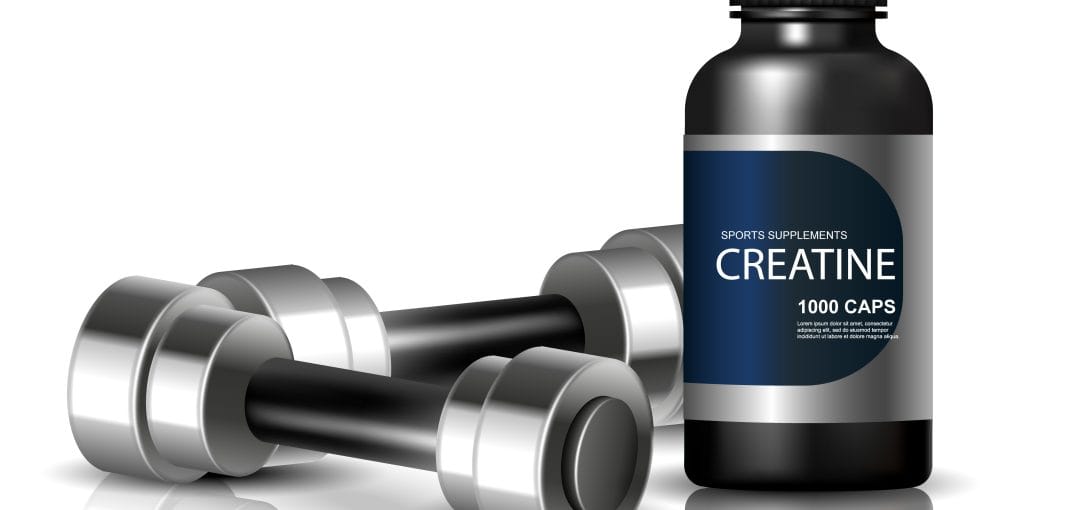Creatine Monohydrate is the most searched supplement due to its benefits and positive impacts on the body. It is stored in your muscles, and foods like meat and fish contain natural creatine.
Keep reading to learn more about creatine’s benefits, when to take creatine monohydrate and the right time to consume it.
What is Creatine Monohydrate, and What Does it Do?
The most widely searched and used form of creatine is Creatine Monohydrate. It is proven to increase muscle mass and increase strength. It requires an initial loading phase followed by a maintenance dose. It is practical and affordable.
But what does creatine monohydrate do?
In simple words, Creatine increases the presence of ATP molecules, the basic energy source for muscle contractions during intense and short workouts.
Furthermore, ATP is rapidly utilized in high-intensity workouts like sprinting or weightlifting. This ATP helps replenish it and allows the muscle to continue working out with the same energy and force.
Creatine supplementation supports short bursts of activity by regenerating ATP. This allows muscles to continue working out with force. Over time, this increased energy aids in improving muscle mass, power, strength, and endurance.
Advantages of Creatine Monohydrate
The reason behind the popularity of creatine is the benefits it brings along. The main advantages of creatine monohydrate are briefly discussed in the section below:
Improved Muscle Strength and Muscle Mass
Creatine supplementation improves muscle growth by increasing the availability of ATP molecules in the muscles. This allows users to have more intense and longer training sessions. In addition, it promotes protein synthesis and decreases muscle breakdown. To that end, there will be greater muscle size and strength with time.
Improved Exercise Performance
Creatine monohydrate supplementation increases phosphocreatine levels in the body, allowing users to perform better during hardcore exercises. Moreover, it improves power output and endurance. It is ideal for weightlifting, interval training, and sprinting.
Glycogen Replenishment and Recovery
Creatine also aids in replenishing muscle phosphocreatine stores and glycogen levels in the body. This is important for sustained energy levels and helps quicker recovery between workout sessions.
Therapeutic Effects
Creatine also helps reduce the risk of injuries and rehabilitation. To that end, it is a useful supplement for adults, thereby helping them reduce age-related muscle issues while supporting and improving their cognitive health.
Brain Function
Creatine increases ATP production in brain cells, helping the brain function well. This improves memory and also reduces mental fatigue.
When to Take Creatine Monohydrate?
Timing is not very important for creatine’s effectiveness; however, consistency is the key. Moreover, some studies have shown that it must be taken post-workout, but the difference between the results is minimal.
How to Take Creatine Monohydrate?
The recommended creatine monohydrate dosage varies depending on the age, gender, lifestyle, and goal of an individual. Initially, it is better to choose through a ‘loading’ phase. It is essential to saturate creatine stores in muscles. After that, you must only consume the recommended creatine monohydrate to maintain levels.
Taking 5g of creatine monohydrate four times a day for 5-7 consecutive days is recommended throughout the loading phase. To maintain the levels, taking 3g-5g per day is good.
Potential Side Effects of Creatine Monohydrate
Almost 1,000 studies back up the safe nature of creatine monohydrate. Moreover, the long-term usage of this supplement does not require cycling on and off. Some potential creatine side effects are:
Digestive Issues
Some people might complain of stomach discomfort when consuming creatine supplements, specifically when taking higher doses during the loading phase. In that case, you can distribute the doses into smaller parts throughout the day.
Dehydration
Water retention can occur in the muscles due to the consumption of creatine supplements, which pull water from other parts of the body. This increases the risk of dehydration. However, it can be combated by consuming ample water to stay hydrated.
How to Incorporate Creatine into Your Workout Routine?
You can incorporate creatine monohydrate into your workout routine in many practical ways. It can be incorporated into the routine before or after the workout. It can be taken through the following ways:
1. Mixing it with water or juice
2. Adding it to your pre-workout supplement
3. Adding it to your supplement stack
However, staying consistent with the creatine regime is very important to see visible results in strength and performance.
In a Nutshell
With the help of creatine monohydrate, you can slowly maximize your creatine muscle stores over weeks. Nonetheless, the quickest way to optimize the stores is following the loading phase and lowering the doses to maintain creatine levels.
If you’re wondering what creatine monohydrate does for your body, it helps improve muscle strength, performance, and recovery. If you are still determining the positive impacts of creatine on your body, consider speaking to a healthcare professional to ensure it is safe for you.
